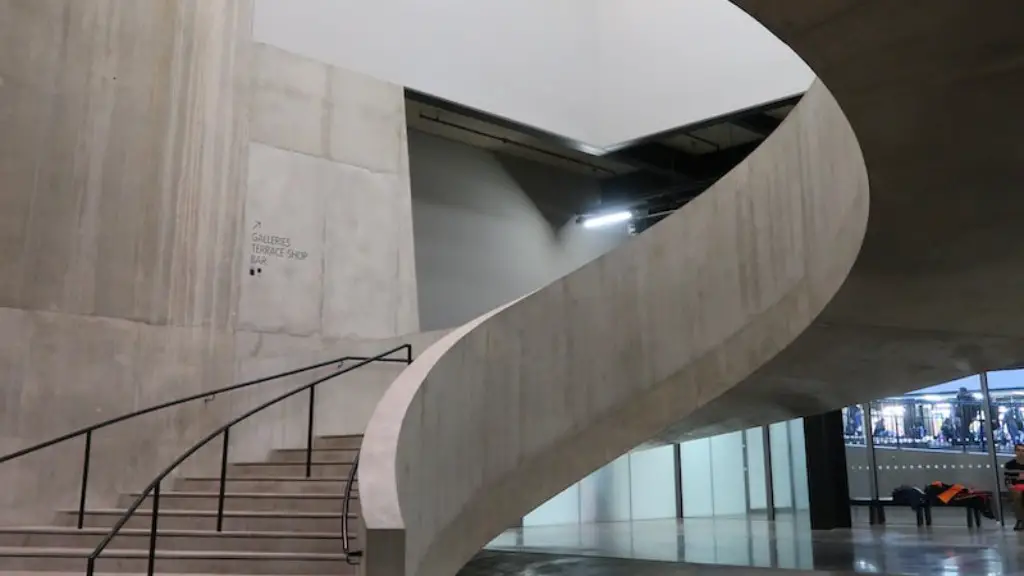Building on the Past
Architecture has been around in some form or another since the dawn of history. From ancient monuments to the great cathedrals of the Middle Ages, each era of history has left its own unique and lasting impact on the world’s architecture. Yet, who was the very first architect?
The answer to this question varies, depending on the source. Some believe that the Mesopotamians were the first to design, build, and engineer large-scale structures back in 7500 BCE. Their early wooden and mud-brick homes and temples, found along the ancient Fertile Crescent, indicate significant mathematical and architectural knowledge.
Roman architecture, which emerged around the 4th century BCE and is famous for its beautiful and grandiose structures, was heavily influenced by the Greeks and Etruscans’ use of symmetry, proportion and large-scale architectural features. This can be seen in the many surviving Roman structures, such as the Pantheon, which was built in 117 CE under the rule of Emperor Hadrian. Architectural historians regard the Pantheon as one of the most significant and influential buildings of all time—hailed by Renaissance and post-classical architects as the epitome of classical beauty.
However, some say that the first true architects of history were the Egyptians, who built the Great Pyramids in Giza, around 2560 BCE. The Great Pyramids display complex engineering and construction technology for the time in which they were built, and even today remain amazing feats of engineering and architecture. It is believed that the architects of the Great Pyramids, who must have been extremely knowledgeable and skilled, laid the foundations of modern architecture.
Egyptian and Mesopotamian architecture had a large influence on later Western architecture. The Old Testament book of Exodus provides a glimpse into the design of ancient Near Eastern temples, the precursors of classical Greek, Roman, and Islamic architecture. Ancient Greek architecture followed its own timeline, however, and was later imitated by the Romans, who embraced the use of the arch, dome, concrete, and large-scale public works to build some of the world’s most magnificent structures.
Today, modern architecture has come a long way from its ancient roots. It is a highly specialized field, requiring a great deal of knowledge and skill. Architects must understand the principles of engineering, mathematics, and design, as well as have a thorough understanding of construction materials and techniques. Architects have to be up to date on trends in design, architecture, and urban planning, as well as have a well-rounded knowledge of their local climate.
No matter who may have been the first true architect, one thing is certain: architecture has changed greatly over the centuries. We owe a great debt to the architects of history who laid the foundation for modern architecture and continue to shape the world we live in.
Innovative Materials
Innovations in materials have allowed architects to construct increasingly complex, robust and permanent structures. Starting with stone and wood, the use of materials such as brick, concrete, and steel quickly followed. These changes in materials sparked innovations in building techniques and design, which allowed architects to express their creativity.
With the invention of new materials, architects have also been able to create structures which are more energy efficient and eco-friendly. Advances in architecture and construction technology have allowed for the creation of buildings which have shorter construction times, better insulation, and improved ventilation, making them cost effective, efficient, and sustainable.
In addition to traditional materials such as wood, stone, and concrete, architects are now experimenting with new materials such as glass and metal. Glass can be used to both insulate and reflect light, creating an aesthetically pleasing facade which allows for the efficient use of energy. Similarly, metal can be used to construct structural columns and walls, while providing increased structural stability and durability.
These new materials also offer architects more opportunities to experiment and create unique and innovative designs. Open-plan layouts, curved walls, biomorphic forms and cladding can all be created using modern materials, allowing architects to express their creative vision.
Materials such as steel and glass have not only allowed architects to build more aesthetically pleasing and functional buildings, but have also been integral in pushing the boundaries of architectural design.
Early Architects
The history of architecture is full of architects who pioneered innovations in design and construction. Ancient architects such as Imhotep, who built the earliest surviving pyramid in Saqqara, Egypt, in 2630 BCE, are attributed with creating some of the world’s most respected structures. Similarly, Roman architects such as Vitruvius, who wrote the ten books of architecture, are credited with creating many of the earliest concepts of architectural theory.
Architects in the Renaissance such as Brunelleschi and Palladio are credited with bringing a renewed focus on the philosophy of architecture. They shifted the emphasis from solely using classical forms, to using classical elements in more creative and innovative ways. This allowed them to better integrate their architecture with the surrounding environment, creating buildings which had a harmony with their landscape.
Peter Eisenman, an American architect of the 20th century, is credited with advancing new architectural theories which broke from the traditional conventions of form and aesthetics. Eisenman’s experimentation with postmodern and deconstructivist theories, as well as his use of computers to design forms, many regarding him as one of the most influential architects of the modern era.
The work of these and many other architects, past and present, have pushed the boundaries of what is possible in architecture. From ancient monuments to modern skyscrapers, these architects all shared the same goal: to create truly inspiring and meaningful buildings.
Modern Architecture
Modern architecture is an umbrella term which encompasses contemporary, post-modern, and conceptual designs. These styles are defined by the use of modern materials, technology and techniques. The aim of this type of architecture is to create buildings which are efficient, functional, and aesthetically pleasing.
Modern architecture emphasizes the use of sustainable materials, such as wood, stone, and metals. These materials are used in combination with modern technologies such as prefabrication, energy efficient materials and green roofs, to create structures with minimal impact on the environment. Another important goal of modern architecture is to maximize the use of natural light and provide natural ventilation systems, in order to reduce reliance on artificial lighting and air conditioning.
One of the main aims of modern architecture is to create buildings which are in harmony with their environment. This can be seen in the many modern buildings which blend into the surrounding landscape and make use of natural materials. Similarly, modern architecture also emphasizes the importance of finding the right balance between form and function, in order to create buildings which are both beautiful and practical.
Modern architecture has come a long way in the past few decades, and continues to evolve and push the boundaries of what is possible in terms of design and construction. Architects today are using modern tools and technology to create buildings which are not only aesthetically beautiful, but also efficient, practical, and sustainable.
The Role Of Architects
Architects have a major role to play in the society we live in. They design the places in which we live, work, and play, and have an important role to play in the development of cities and towns.
Architects must be mindful of the effects their designs have on the environment around them. They must also design with the intention of promoting social equality and providing everyone with access to improved living conditions. As such, architects must be conscious of the fact that their designs should not be exclusive or inaccessible, but rather should incorporate elements which make them attractive and available to everyone.
In addition to designing practical, functional, and aesthetically pleasing buildings, architects must also consider their impact on the environment. This means taking into account the energy efficiency of their designs, and using materials which have minimal impact on the environment. Architects should not only focus on creating visually appealing structures, but also those which are cost effective and minimize their ecological footprint.
Architects have the power to create places which can have a positive impact on the lives of those who live and use them. Through their designs, they can help promote social equality, improve living conditions, and make cities and towns more environmentally friendly. The role of architects is thus essential in creating a better society.





